
Neptune square or Piazza del Plebiscito (Piazza Nettuno) - very elegant and one of the two main squares of the historical city centre of Bologna.
On the square is always quite crowded, and around the perimeter of the tower are the main historical buildings of the city.

Founded in 1565 with the purpose to distinguish with the statue of Neptune, Piazza Nettuno was the result of work in which the existing space between the two palaces Comunale and Podesta was enhanced by the demolition of nearby buildings.
New square gave a completely new character to the whole surrounding area, joining the already existing Piazza Maggiore (Piazza Maggiore) and thus the two squares together, formed a single ensemble, and forever fixed the image of the historic centre of Bologna. Read more about Piazza Maggiore in Bologna...
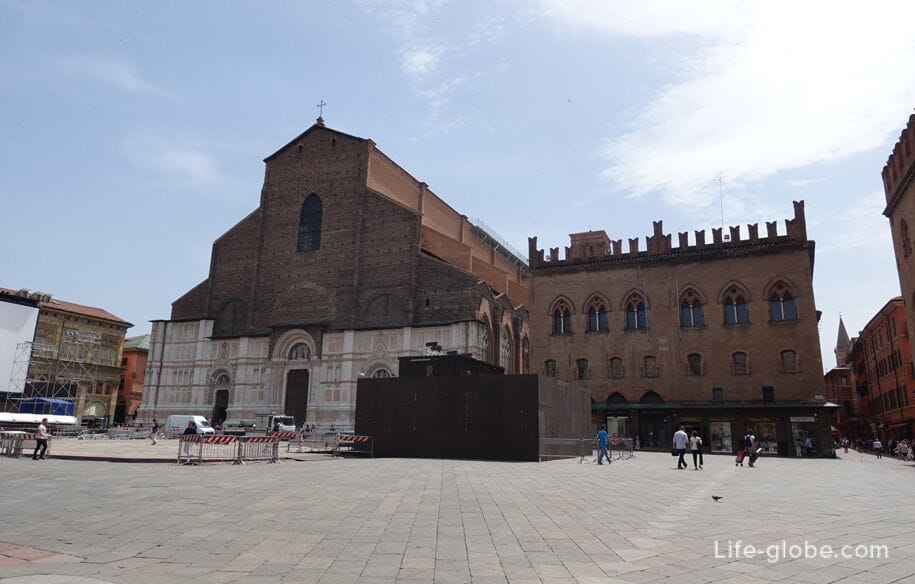
The center of the square of Neptune decorates the largest and most famous fountain in the old part of Bologna - fountain of Neptune / Neptune or Fontana del Nettuno (Fontana del Nettuno), after whom the area got its name and, in fact, which was formed.

To the fountain of Neptune are three stairs, which is a reservoir, made of local volcanic material and coated with Veronese marble. In the center of the tank is a pedestal decorated with four Nereids (sea nymphs). Above the sculptures are the Pontifical emblems with the ornaments and the four cherubim, holding the dolphins and representing the Ganges, Nile, Amazon and Danube, the four parts of the world that was known at the time.
In the center of the sculptural composition of the fountain stands the majestic figure of Neptune, a work by Giambologna.
Neptune, extends forward the right arm is a symbol of the exaltation of Pope Pius IV, which became then the symbol of the political power of the Church in Bologna, as well as Neptune is considered the ruler of the seas, the Pope was considered the ruler of the world.
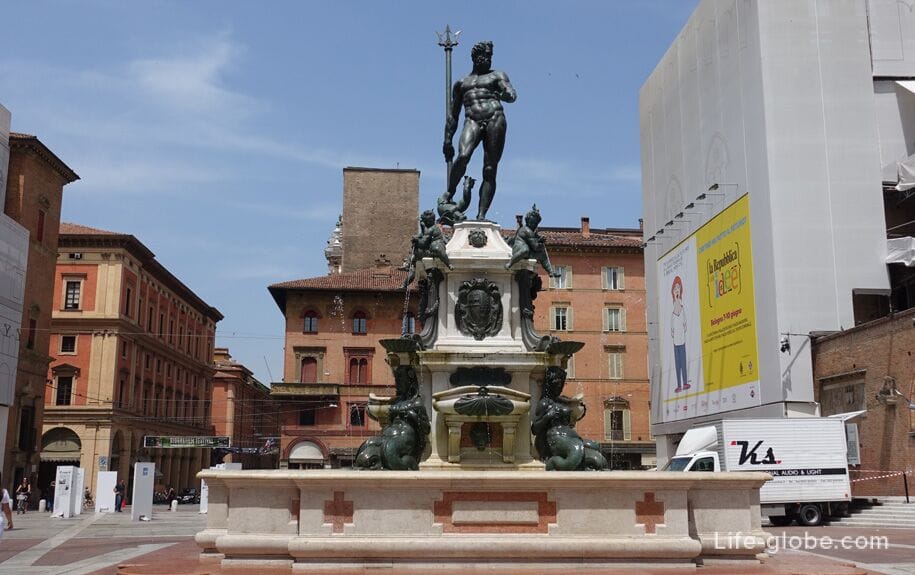

On two sides of the square of Neptune are:
- ancient Salaborsa - now Salaborsa library (Biblioteca Salaborsa) - building over the centuries carrying out the most various functions.
Municipal library building began in December 2001. This is the main public library in Bologna. Visitors to the library can see the archaeological excavations through the crystal floor in the center of the library. Ancient ruins are also available with the basement, where there is information about those. The ruins include the remains of the ancient city Bononia (now Bologna), which dates back to 189 BC (there is also the Etruscan ruins that predate Roman);
- Palazzo Re Enzo (Palazzo Re Enzo), located in front of the library. The structure is also known as the New Palace. The name "New Palace" was only to distinguish it from the old Palazzo del podestà, the Palazzo adjacent to the Enzo.
The Palace was the place of imprisonment of king Enzo, son of Emperor Federico II, captured during the battle of Fossalta in 1249 and were in the walls of the Palace until his death in 1272. Currently in the building, which still bears the same name, the trade fairs, exhibitions and conferences, a cafe and shops.
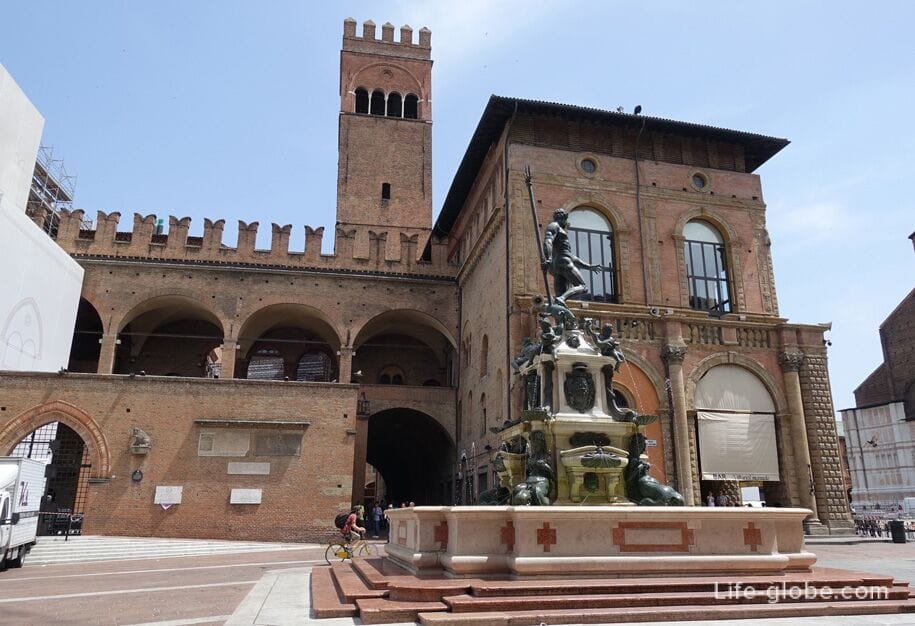
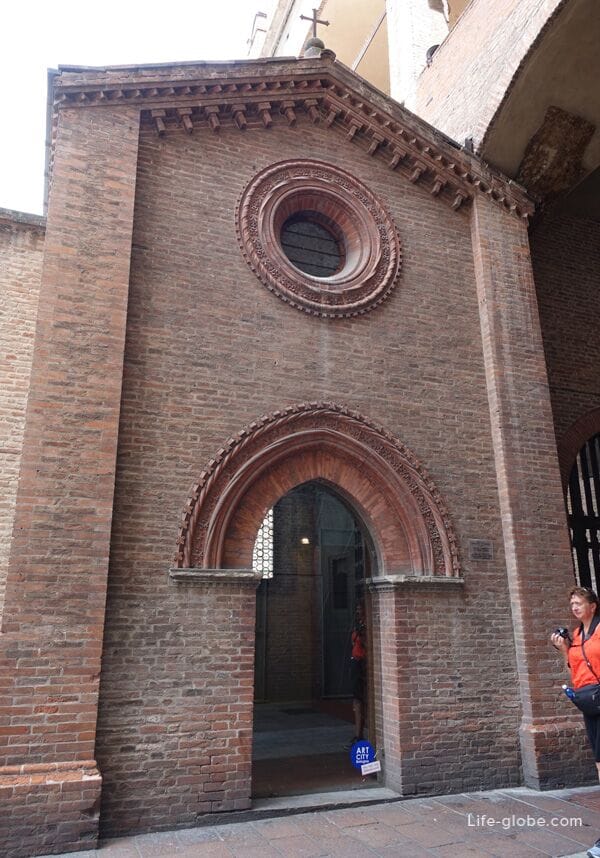
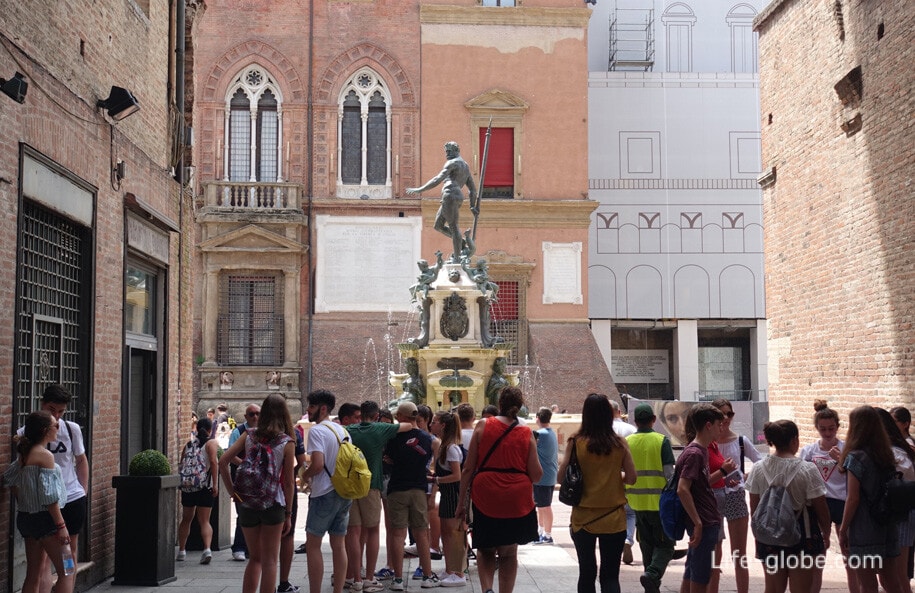

In the Central part of the cloister of the Palazzo, with vaulted descendant, decorated with sculptures and paintings, well-transmitted sound waves. If you stand in the diagonally opposite corners from each other, face to the corner - you can whisper to talk.
This effect is connected with the legend. Leprosy was a big problem of the middle Ages, including the city of Bologna, the number of patients is constantly growing. Lepers publicly read the burial service in the Church and placed in the leper colony, they were considered "dead" for the Church and for society. Despite this the Ministers of the churches was to take the confessions of all the parishioners, the sick and the healthy. To this end, they found a way not to approach the leper (to protect themselves from the disease) and at the same time that the patient might confess, perhaps for the last time. The Palazzo had acoustics that allows to make confession at a substantial distance at the same time so that those could not hear the third party - the leper stood face to angle and confessed, while the monk let go his sins from the corner diagonally.
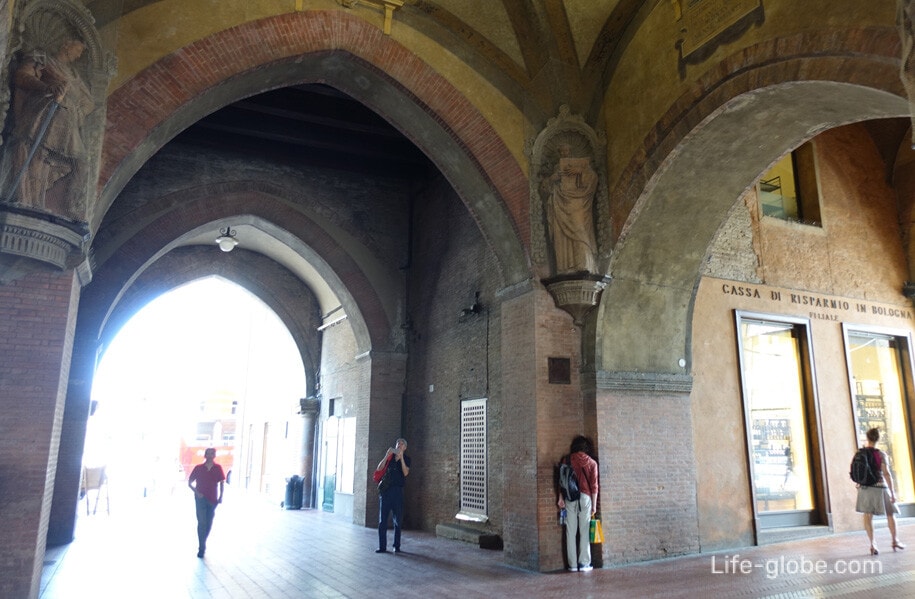
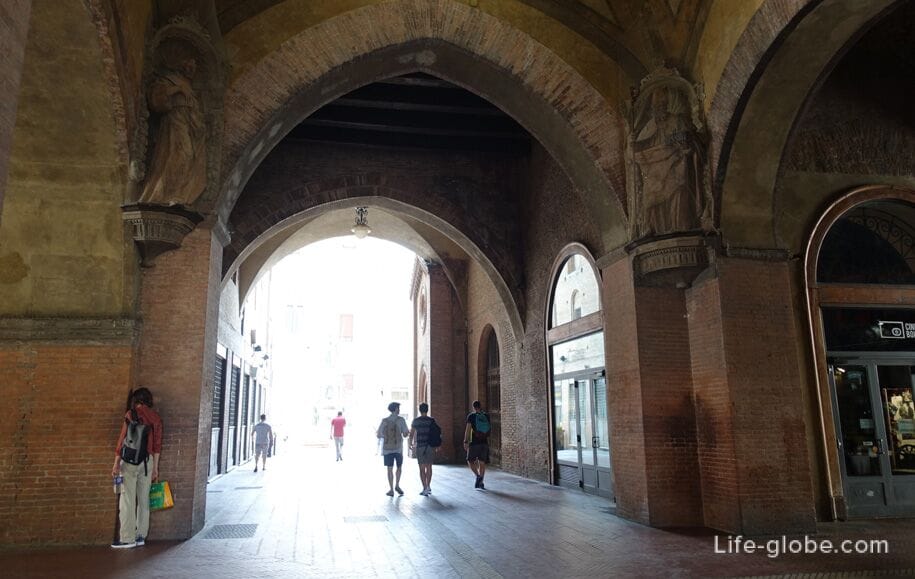
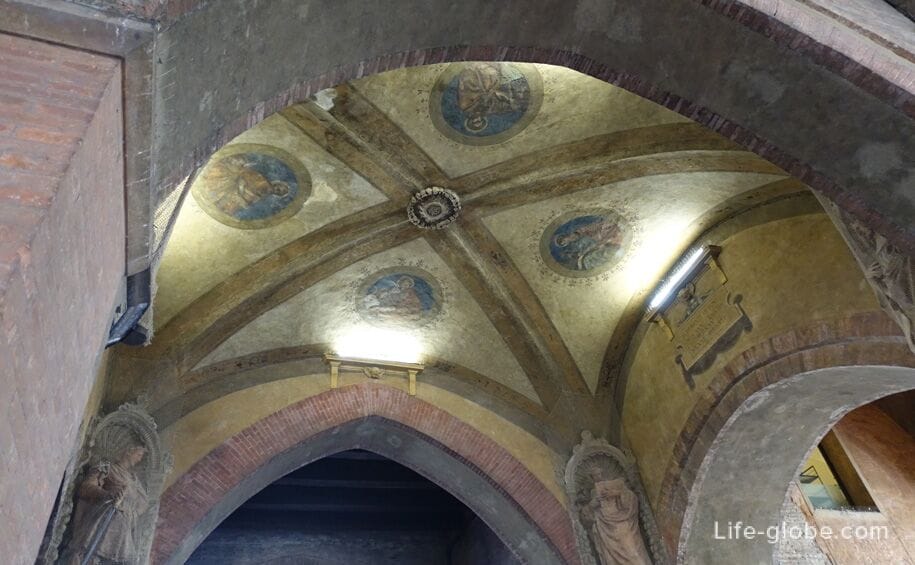
Accommodation facilities (hotels, apartments) in the historical centre of Bologna...